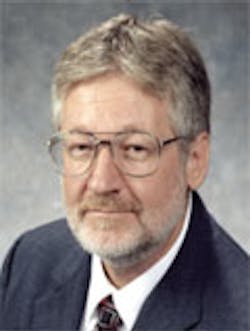An issue packed full of vital information
When the public — meaning most of America — considers the oil and gas industry, they usually think of the oil majors like ExxonMobil or one of the large IOCs like BP or Total. They seldom give a thought to the many oilfield service and equipment supply companies that make drilling and production possible, not to mention all the activities that lead up to spudding a well and ongoing well services during the production cycle.
The February issue of Oil & Gas Financial Journal, which will be distributed free at EnerCom's annual Oil Services Conference in San Francisco, Feb. 17-18, focuses on that sector of our industry. First, OGFJ editors interviewed Richard Miles, president and CEO of Geokinetics, a global geophysical services company with about half a billion dollars annually in gross revenue. Due to the deeper impact of the economic downturn on the US petroleum sector, Miles says the company has moved much of its equipment and personnel overseas. Currently, about 80% of the company's business is outside the US, and he adds that Geokinetics may be one of the few oilfield service firms to increase both revenue and net income in 2009.
This first Oil Service Issue also includes a report on leading US-based service and supply companies. This report will be expanded in scope in future issues to include more companies and more information about each.
Don Warlick, president of Warlick International, has authored a new report on unconventional gas development in North America (www.WarlickEnergy.info) and has written an analysis of the top five US gas shales in this issue. These five largest gas shale plays account for about 10% of US natural gas production at this time, a figure that he expects will double by 2012. Warlick's article discusses the economics of the various shale plays, the major players in each, and the role of technology in improving well results.
Speaking of shale plays, Chesapeake Energy has formed a new joint venture agreement with France's Total in the Barnett shale. Total is acquiring a 25% interest in Chesapeake's upstream Barnett assets. OGFJ Associate Editor Mikaila Adams provides all the details beginning on page 36.
Boyd Heath, chairman and CEO of Network International, says that a close examination of surplus equipment levels as well as raw material inventories can provide insight into future pricing and can be a key economic indicator for the oil and gas industry. He offers historical perspective to make his point.
Washington, DC attorney Stephen Glazier explains how new patent strategy metrics can increase market capitalization in his article that begins on page 42. He calculates that the greatest value of patent portfolios comes not from the cash flow from deals or litigation. Instead, the most value often comes from a portfolio's impact on the business plan through added market share, increased margins, and the resulting impact on product sales and earnings.
In our monthly Capital Perspectives column, Houston attorney John Bradford discusses how an old-fashioned retail concept called "Cash and Carry" has recently found favor in the oil patch. He concludes that cash and carry deals provide flexibility to sellers and buyers to meet their tax objectives for the transaction, while still meeting their financial and operating objectives.
The OGJ150 Quarterly in this issue provides a detailed report and analysis on the largest US-based publicly-held oil and gas producers with domestic production. Our conclusion based on third-quarter 2009 financials is that a gradual economic recovery is continuing in the upstream sector based on encouraging statistics the past two consecutive quarters.
In addition to the quarterly OGJ150 report, OGFJ now publishes a monthly report on merger and acquisition activity in collaboration with The Rodman Energy Group. In the January report, it was noted that the $41 billion ExxonMobil-XTO Energy deal may be a precursor to a surge in M&A activity this year. In this month's M&A report, which begins on page 46, several additional large transactions are reported, including Chesapeake's JV with Total and Devon Energy's decision to divest its Gulf of Mexico assets, including the sale of its interest in the Lower Tertiary GoM development projects to Copenhagen-based Maersk Oil for $1.3 billion.
Last but not least, in her Beyond the Well column, OGFJ's Mikaila Adams tells about the community-minded attitude of Dallas-based Chief Oil & Gas, a privately-held E&P company that has become a major player in the Marcellus shale in Pennsylvania. As Chief expands in the Marcellus, the company is generously helping the surrounding communities by donating funds to help struggling families pay their utility bills, as well as making donations to area schools and fire departments, and providing jobs for local workers. By giving back to these communities, Chief demonstrates the economic benefits of oil and gas development.
Have an opinion about this? Visit www.ogfj.com to comment.
More Oil & Gas Financial Journal Current Issue Articles
More Oil & Gas Financial Journal Archives Issue Articles
View Oil and Gas Articles on PennEnergy.com
